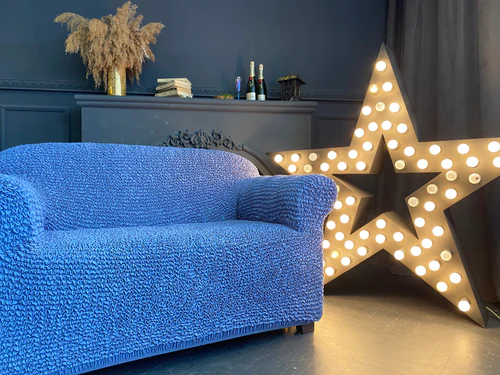Taking the step to upcycle furniture reveals how important it is to promote a sustainable way of life. Unlike recycling, which simply takes the use of repurposed materials, upcycling infuses old pieces with newfound elegance, granting them a second life while lessening our environmental footprint. Through upcycling, our dwellings get enriched with distinctive and purposeful creations that seamlessly blend imaginative design with practicality. For those new to the concept of sustainable living, simple projects like utilizing couch covers can serve as an accessible entry point. These slipcovers offer a way to update furniture without requiring a lot of time or substantial DIY skills, enabling people to see the potential in forgotten items and enjoy the renewal process.

Furniture Upcycling: Why Your Old Sofa Deserves a Second Chance
Have you ever looked at your worn-out sofa and thought, “It’s time for a replacement?”
Before you bid farewell to your trusty companion, consider this: furniture upcycling might just be the transformative solution you’re looking for. In a world where sustainability is gaining ever more prominence, giving your old sofa a second chance not only adds a touch of character to your living space but also contributes significantly to reducing waste.
Moreover, furniture upcycling allows you to unleash your creativity and personalize your living space like never before. Whether it’s a fresh coat of paint, new upholstery, or a creative rearrangement, the possibilities are endless. Plus, upcycling is often more cost-effective than buying new furniture, saving you money while simultaneously reducing demand for new resources.
What Furniture Upcycling Brings to The Sustainability Table?
Furniture upcycling has become a key strategy in the push for sustainability, offering an effective way to reduce waste and extend the durability of household items. This approach transforms old furniture, including sofas, into renewed, functional pieces, significantly reducing the volume of waste sent to landfills and counteracting the prevalent disposable culture in today’s shopping habits.
It demonstrates the significant impact individual efforts can have on wider environmental goals, such as decreasing the demand for new materials and reducing the carbon footprint associated with the furniture lifecycle.
Upcycling encourages a mindset of innovation and practicality, prompting people to see the hidden value in items they might otherwise throw away. By incorporating sofa upcycling, this practice goes beyond being a fashionable choice; it is a deliberate move towards more responsible consumption and waste management, reflecting a commitment to a more sustainable way of living.
The Process Of Upcycling Furniture
Embarking on the upcycling journey transforms old, weary furniture into chic, practical showpieces through a blend of careful planning and artistic flair. This adventure kicks off with the selection of sturdy, character-rich vintage pieces poised for a fresh lease on life.
A detailed inspection and repair phase follows, targeting durability and safety enhancements, and setting a solid foundation for the creative overhaul. The next phase dives into the realm of design, where choosing new color palettes, finishes, and modifications takes center stage, driven by a burst of creative vision. This stage often involves drawing inspiration from contemporary design trends, historical periods, or even the natural textures found in the environment, ensuring each piece tells a unique story.
Preparation for the transformation is meticulous, involving the removal of old paint or varnish, smoothing the surface through sanding, and applying a primer to guarantee a flawless finish. In the application phase paint, stains, or innovative finishes are skillfully applied.
Techniques can vary widely, from the rustic charm of distressing to the sleek elegance of lacquering, each chosen to highlight the furniture’s best features.
The final touch in this process is the application of protective coatings to safeguard the furniture’s new appearance, alongside possible hardware updates that enhance functionality and style. With each step, the furniture undergoes a remarkable transformation, not only in appearance but in spirit, ready to be cherished for many more years.
Useful Tips and Best Practices
Launching into your furniture upcycling odyssey is more fruitful with some sage advice and best practices:
- Prioritize Quality: Seek out restored furniture with robust materials like solid wood for enduring appeal.
- Tool Up: Investing in premium tools and materials can dramatically enhance your project’s quality.
- Character Counts: Accept each piece’s characteristics and peculiarities, allowing them to deepen your design.
- Dare to Experiment: Open yourself up to the vast world of upcycling techniques for truly personalized results.
- Sustainability Focus: For eco-friendly options use low-VOC paints or other green alternatives.
- Broaden Your Horizon: Upcycling can extend beyond painting to include reupholstering or hardware updates for a full transformation.
- Seek Out Inspiration: Draw from a diverse range of sources to spark your imagination and guide your upcycling journey.
Diving into furniture upcycling blends creativity with environmental responsibility seamlessly. This practice conserves resources and adds a distinctive flair to our living spaces, reminding us of the stories behind each piece. As the upcycling movement continues to flourish, we pave the way toward a future where sustainable design takes center stage, nurturing a mindset of mindful stewardship and inventive rejuvenation for future generations.


